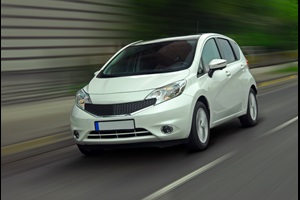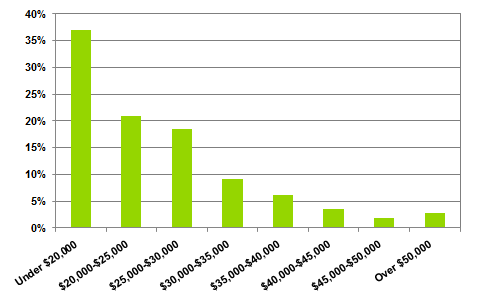- Pre-Owned Vehicles
- Tax Rebates
- Transportation Efficiencies
- Plug-In EVs
Used PEVs Open Price-Sensitive Buyer Market

PEVs originally sold in 2012 are coming to the used market after their leases have completed or their owners have upgraded to newer electric models with longer driving ranges. Used PEVs, which generally have reduced maintenance costs due to fewer mechanical parts to wear out while relying on a much cheaper fuel source, can be an affordable first or replacement car for cost-conscious buyers who closely monitor their monthly expenses.
For example, many used 2012 model year Nissan LEAF ($10,000-$12,000), Mitsubishi I-MiEV ($8,500-$10,000), and Chevrolet Volt ($15,000-$18,000) cars can be found on Carmax.com that fit within a much greater percentage of budgets than a new PEV. While only in Colorado can used PEV buyers get a state tax credit, pre-owned PEVs are around half the cost of a new model—even after all incentives are factored in.
Results from Guidehouse Insights’ 2015 survey of American consumers found that 77% expect to spend $30,000 or less for their next car. This expectation excludes them for considering nearly all of the PEVs on the market—even after factory, dealer, or government incentives are included.
Consumers' Expected Purchase Price for Next Vehicle
However, more economically diverse consumers that become aware of the benefits and savings from owning a used PEV may consider staying electric with a new vehicle purchase as their incomes allow. This should enable sales of PEVs in future years to grow even more quickly, as experience with a PEV greatly increases the desire to own one.
Addressing Affordability
Automakers continue to address affordability with their PEV pricing strategies. Due to disappointing sales in China of its localized version of the Nissan LEAF (thought to be linked to its higher price), Renault-Nissan will develop a less expensive battery electric vehicle (BEV) for the Chinese market, according to Automotive News Europe.
The PEVs that will be released in the next 18 months in the United States promise greater value through longer driving ranges at a lower cost per mile. Unfortunately for companies like Tesla that are looking to address more cost-conscious consumers, they may start to run up against the 200,000 vehicle cap on customers being able to collect the full federal tax credit. Middle-class car buyers receiving a smaller tax credit for a $35,000-ish Tesla than was available for a nearly six-figure vehicle could be an unintended irony of the current federal tax rebate structure.
